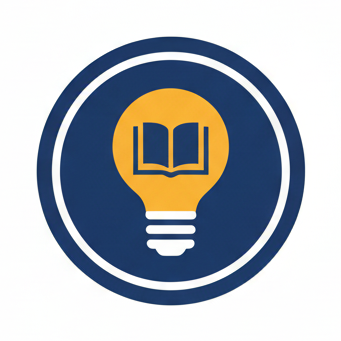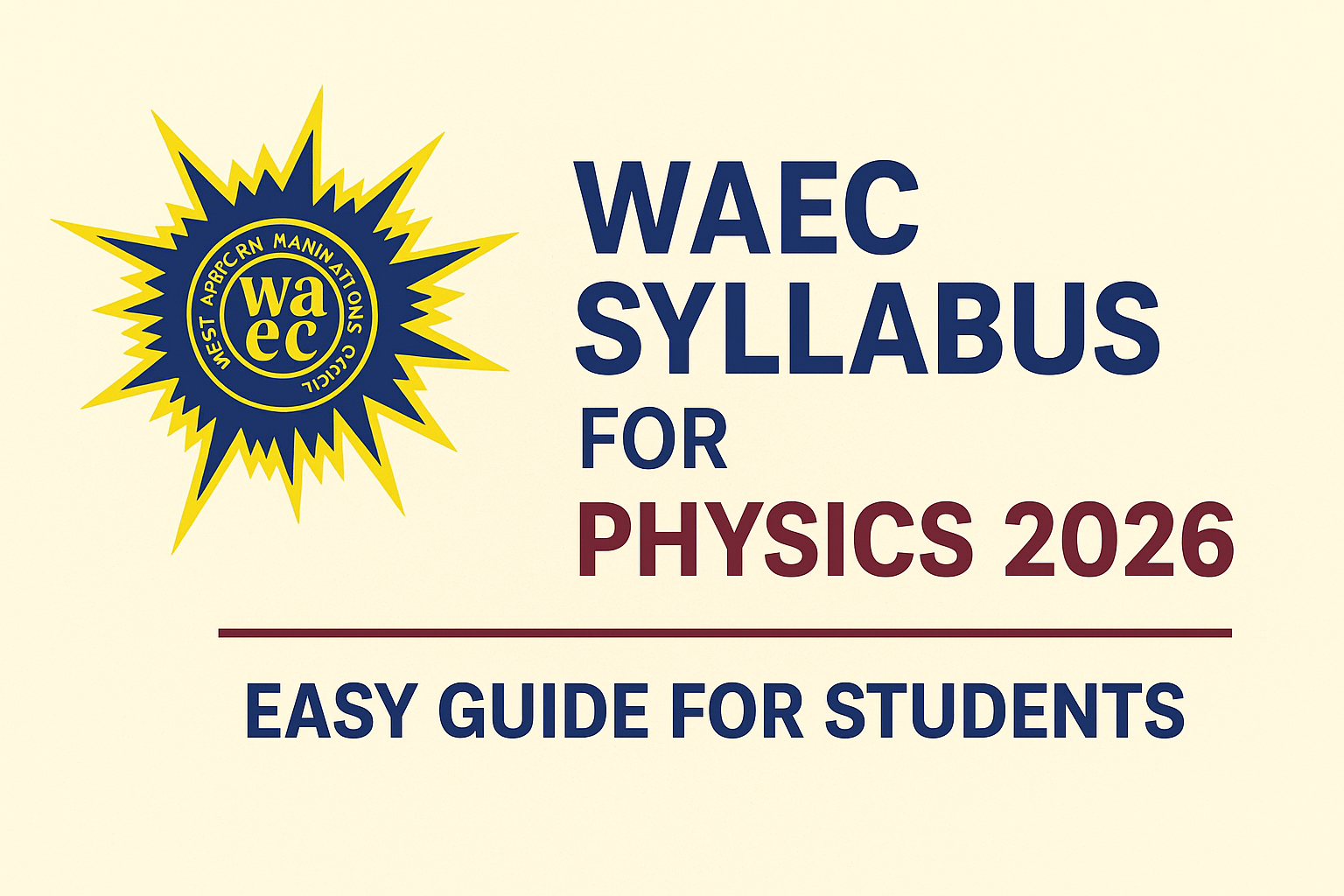If you’re planning to write the 2026 WAEC Physics exam, the best place to start is with the official syllabus. Think of the syllabus as your personal study map, it shows you the exact topics WAEC will set questions from, how the exam is structured, and the areas you should focus your energy on.
This easy-to-understand guide breaks down the WAEC Physics Syllabus for 2026 in a friendly way so you can study smarter, not harder.
Why the 2026 WAEC Physics Syllabus Is Important
Physics can feel difficult when you don’t know what to read. But once you follow the syllabus, everything becomes clearer. The syllabus helps you:
- Know the exact topics WAEC will test
- Understand the key skills you must develop
- Avoid reading unnecessary topics
- Organize your study time more effectively
- Prepare confidently for objectives, theory, and practicals
It’s basically your blueprint for getting an A.
Full WAEC Syllabus for Physics 2026
Here are the topics you need to study.
1. Measurement and Units
You’ll learn how to measure things correctly, use instruments like Vernier callipers and micrometres, and understand units like meters, seconds, kilograms, etc.
This is an easy and scoring area.
2. Motion and Speed
This section covers:
- Speed, velocity, and acceleration
- Types of motion
- Distance-time and velocity-time graphs
- Equations of motion
Questions from here appear almost every year.
3. Forces and Newton’s Laws
You’ll study:
- How forces act on objects
- Friction
- Balanced and unbalanced forces
- Moments and centre of gravity
Both calculation and theory questions show up often from this topic
4. Work, Energy, and Power
This explains how energy is used and transferred.
You’ll learn about different forms of energy, conservation of energy, and how to calculate power.
5. Machines
This topic shows how simple machines like levers, pulleys, and gears help us do work more easily.
You’ll also learn about mechanical advantage and efficiency.
6. Heat and Temperature
This includes:
- Thermal expansion
- Heat transfer
- Latent heat
- Gas laws
You should expect calculations and short theory questions here.
7. Light (Optics)
You’ll learn about:
- Reflection and refraction
- Lenses and mirrors
- How cameras, the human eye, and microscopes work
- Total internal reflection
This is one of the most interesting sections.
8. Waves and Sound
Topics include:
- Types of waves
- Wave properties
- Echo and sound waves
- Musical sounds
Diagrams and examples make this section easier to understand.
9. Electricity
This is a large and important part of the exam. It covers:
- Electric charge
- Current, voltage, resistance
- Ohm’s Law
- Series and parallel circuits
- Household wiring
- Electrical power and energy
Expect several questions from here.
10. Magnetism
You’ll study magnets, magnetic fields, and how electromagnets are used in real life.
11. Electromagnetic Induction
Topics include:
- How electricity is generated
- Faraday’s and Lenz’s Laws
- Transformers
- AC and DC currents
This section is very important for theory questions.
12. Modern Physics
You’ll learn about atoms, radioactivity, nuclear reactions, and the photoelectric effect.
These are mostly short explanation questions.
13. Electronics
This topic covers:
- Semiconductors
- Diodes and transistors
- Logic gates
- Basic electronic circuits
Private candidates should pay attention here.
WAEC Physics Exam Format (2026)
Paper 1 – Objective (Multiple Choice)
Fast questions covering every topic in the syllabus.
Paper 2 – Theory
You’ll answer structured questions and calculations.
Paper 3 – Practical / Alternative to Practical
School candidates do real experiments, while private candidates answer practical-based questions.


Leave a Reply